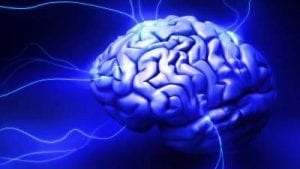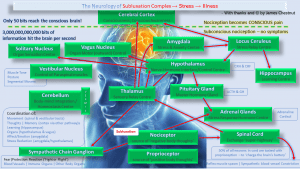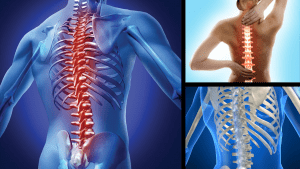"Quick Adjustments" Video Series
Answers To Common Chiropractic Questions
INTRO:
Chiropractic Quick Facts:
#1 – Where did Chiropractic come from?
Chiropractic has been around in its current form since 1895.
It was “discovered” at that time by an American Daniel David (DD) Palmer and later ‘developed’ by his son Bartlett Joshua (BJ) Palmer.
Yet, there is a lot of information in the historical record about ancient cultures – Greeks, Romans, Chinese and Egyptians working with the spine to promote health and wellbeing!
#2 – Functional Neurology
Chiropractors work with your spine (primarily) to affect the function of your brain and nervous system – the control and coordination system that keeps you functioning the way you’re meant to.
In this way you can describe chiropractic as ‘functional neurology’ – improving nerve system communication to get your many functions working better!
We’re not ‘back’ doctors so much as brain and nerve system doctors – the spine is the best way for us to ‘interface’ with or influence your brain and nervous system function.
#3 – Philosophy of Health
Chiropractors have a philosophy underlying how they look at your body and what recommendations they make.
For them, sickness, ill-health and disease is a LACK of a healthy ecosystem of cells – if you can work on improving that ecosystem, remarkable healing and resolution of symptoms may be possible.
#4 – Fixing, Treating, Curing?
Chiropractic IS NOT about fixing, treating or curing (yet these outcomes often occur as a side-effect!)
Fixing, treating and curing are the bedrock of ‘allopathy’ or the sickness and treatment paradigm where you only see a doctor if you’re sick and where they treat the symptoms to have them ‘go away’
This often doesn’t resolve underlying health challenges, it simply suppresses the symptom, giving a false sense of confidence and ‘health’ because you ‘feel’ better despite the causes remaining ‘under the hood’.
How many people do you know that get a 6-monthly check-up, are given a clean bill of health and then experience a sudden health emergency? It’s sadly very common.
#5 – Perception of Self…
Chiropractic IS about enhancing your body’s perception and control of itself…
allowing it to use its internal resources better to improve the chance that healing can occur…
and then help you to move further toward greater levels of function and wellbeing.
"Quick Adjustments"
The video series to answer common important questions!
What Is Chiropractic?
Chiropractic operates in the field of Functional Neurology – understanding that your neurology (your nervous system) intimately controls and coordinates your EVERY function – and from there, your health and wellbeing.
Your brain and nervous system coordinate all body functions and movement, help you adapt to stresses, sense & perceive the world you live in, think, feel, express emotion & create your conscious reality.
Put simply:
you are self-healing, self-regulating, self-aware and self-coordinating
– all because your nervous system is doing its job.
For a full explanation of Chiropractic Care, click here.
To get Dr Ben’s personal take on Chiropractic, click here.
If it get’s compromised, then you get compromised!
Chiropractors work with this relationship (between brain, spine and body) to help your body function at higher levels.
Chiropractic care is simply the assessment and examination of your health status to determine if chiropractic adjustments may benefit you, and if so, performing these adjustments. This is related to, but also separate from, the process of managing any symptoms you may have.
Chiropractic is a health discipline incorporating the science of locating/identifying subluxations and assessing health status, the art of reducing subluxations (nerve system damage/dysfunction), and it is defined by a distinct philosophy about life, health and how these interact with all things natural.
How Does Chiropractic Work?
Chiropractic adjustments effect your body function in many ways.
There are both direct local mechanical effects on your joints and their supporting tissues as well as broader impacts on nervous system function and brain information-processing.
In simple terms, by removing subluxation and helping your body to stop recreating them, chiropractic helps improve regulation, coordination and control of your body - it improves the body's capacity to perceive and 'understand' itself!
It improves the flow of information between brain and body, so feedback from the body and instructional control messages out to the body are as clear and accurate as they can be.
Your brain ensures that you are a self-healing, self-regulating ecosystem; it is receiving billions of messages every second from every part of your body. At the same time just as many messages are leaving the brain to tell the body what to do! Signals sent back to the brain confirm if your body is working right.
If you have ‘garbage’ messages going in, the brain is not as efficient, and it starts to send ‘garbage’ messages out!
Improper motion or position of the moving bones of the spine (= subluxation) can interfere with this vital exchange by irritating nerves, altering reflexes and other brain processing and over time potentially compromising the function of affected organs and tissues.
Specific spinal adjustments can help remove these subluxations and improve mind/body communication, coordination and control. Health often returns with improved nervous system control of the body.
For more detail see detail on the Physiological Rationale for regular chiropractic care here.
See more about chiropractic care here.
What Is An Adjustment?
Chiropractic adjustments are defined right here
There are many different ways to perform adjustments and NJC chiropractors will select the best techniques for you – from traditional ‘manual’ adjustments through to a range of alternatives based on your unique presentation, age, preferences or needs.
Are Chiropractic Adjustments Safe?
Yes!
When performed by a qualified chiropractor, after an assessment of your health and lifestyle status, adjustments are very safe.
Various government enquiries over the last 40 years have repeatedly shown the safety profile of chiropractic to be exceptionally high.
Chiropractors in Australia pay comparably VERY LOW professional liability premiums (when compared with other primary contact doctors such as GP’s) which is a good indication of the risk that they pose. Scientific journals have very little mention of adverse events following chiropractic care relative to the number of adjustments performed every year.
As with any health ‘intervention’ there can be risks in certain circumstances, so your chiropractor will thoroughly assess your history and current circumstances to see if the risks are more significant for you. When you first begin to receive chiropractic adjustments there can sometimes be local soreness, tension or inflammation as your body starts to break down unhealthy habits and begins to remember its healthier state of function.
There is a common misconception that chiropractic can cause stroke. Recent research replicated in different countries show that such a risk is equal visiting chiropractors as it is visiting a GP – so there is some doubt on whether chiropractic ’causes’ this outcome or whether other factors are at play. However even in this situation, the risk is extremely low – somewhere between 1 in 2 million and 1 in 5.65 million adjustments! The risk of stroke is significantly more common from sneezing, washing your hair at the hairdresser, or even reversing your car out of your driveway!
By not employing drugs or risky surgery, chiropractic care enjoys an excellent track record. It may be useful to compare the safety statistics. Just one example – adjustments are about 100 times safer than taking an over-the-counter pain reliever like ibuprofen.
What Is A Subluxation?
FIRST – The definition of ‘subluxation’ is different between Chiropractic and Medicine. Here we focus on the ‘chiropractic’ subluxation.
A subluxation is a state of DYSFUNCTION. They are the ‘entity’ that a chiropractor assesses for, and then helps you ‘clear’ or reduce.
It it a complex of physiological phenomena that compromise your brain’s efficiency and capacity to communicate to the body, and receive accurate feedback from the body.
By removing subluxations, your brain can increase ‘perception of self’
How Do I Get Subluxations?
Through a range of factors either by themselves or in combination that may ‘stress’ your function and/or your body’s capacity to adapt.
If the individual or combined load of these factors over time is too much, your body initiates (or maintains) an intelligent (but unhealthy) ‘fear or protection state’ – leading to changes in your body commonly called the ‘fight or flight’ reaction.
Factors that can contribute to subluxations forming fall into 3 broad groupings – Physical, Biochemical and Mental-Emotional.
Physical causes could include:
(list far from complete!)
slips and falls, accidents, repetitive motions and improper lifting, sleep position, inappropriate breathing and a big one – poor posture against gravity.
Biochemical causes could include:
(list far from complete!)
alcohol, drugs or medications, pollution, unhealthy food or drink, dehydration, acidity, inflammation or exposure to lots of chemicals – from hair products, deodorants and preservatives, to chlorine, antibiotics or industrial chemicals.
Mental-Emotional causes can include:
(list far from complete!)
worry, anguish, grief, sadness, anger, fear, frustration, uncertainty and poor self-esteem, negative ‘self-talk’, feeling unloved, unsupported or like you don’t contribute – just to name a few!
Collectively, these factors can be considered ‘stress’ or ‘stressors’
However, stress itself is neither good nor bad!
Any input or experience that causes your brain to alter your function (your physiology) is a stress.
**Using this definition, you could say ‘going for a run’ is a stress, because your brain makes your heart beat faster and your lungs breathe more deeply.
What makes a stress problematic is how ‘wound up,’ unbalanced or dysfunctional your nervous system is at any moment in time.
If your stress-load is greater than your capacity to integrate or adapt to – you pay a price for the excess.
If it is within your capacity to integrate, then stress acts as a fuel to jump you up to that next level of performance.
For a more detailed explanation of Stress Physiology and how it impacts your health and wellbeing, click here.
How Do I Know If I Have A Subluxation?
Sadly, you don’t!
At least, in most cases subluxations are present and don’t show obvious outward symptoms or signs.
They are exceptionally common.
Like the early stages of tooth decay or cancer, subluxations can be present before warning signs appear.
The results of a thorough examination can show the location and severity of subluxations you may have.
What Makes The Sound
During An Adjustment?
First – the ‘sound,’ if it occurs, is not the adjustment!
Many adjustments are performed that do not result in any noises or sounds.
Some people feel that if they don’t ‘hear’ an adjustment, they haven’t ‘got what they came for’ – nothing is further from the truth!
Some people are fearful about the ‘pop,’ or ‘crack’ sound because of a misconception about what the noise is, or what it means.
When these noises occur with a chiropractic adjustment, they are both safe and normal.
It is not bones banging into each other or ligaments ‘bowstringing’ across bones.
And there is NO TRUTH to the old tale that cracking knuckles leads to arthritis!
Most of the joints in your body have a small space between the bones and cartilage.
This is filled with a lubricating fluid to keep the movement friction-free.
Dissolved in that fluid is the same gas we’re all breathing right now – an Oxygen/Nitrogen mix – it’s actually dissolved throughout every tissue of your entire body.
Some adjusting methods produce a sound when the gas and fluids in the joint shift.
A gas bubble forms, it ‘pops’ and then the gas dissolves again back into the fluid.
It’s much like opening a bottle of champagne, or removing a suction cup.
The sound is interesting, but it isn’t a guide to the quality or value of the adjustment.
What Type Of Education Do
Chiropractic Doctors Receive?
Chiropractic Doctors are well educated.
In Australia this is either a double-Bachelor degree or a Bachelor/Masters at university full-time over 5 years.
The science of chiropractic requires a special emphasis on anatomy, physiology, pathology, neurology, biomechanics, X-ray, spinal adjusting techniques, and related subjects. This demanding curriculum prepares chiropractic doctors to locate the Vertebral Subluxation Complex and help correct the resulting nervous system dysfunction.
To graduate, chiropractic students have to see the general public in clinical internships or placements in their final years.
Chiropractors are considered to be ‘primary contact’ health practitioners meaning we have both the skills and the obligation to assess your health status and determine if our care is appropriate and/or whether you need to be referred to another health specialist. You do not need a referral to see a chiropractor.
Chiropractors are regulated by AHPRA – the Australian Health Practitioners Regulation Authority, a federal body and the Chiropractic Board of Australia.
A chiropractic education never ends. Dr. Ben completes postgraduate education for license renewal and stays current on the latest scientific research.
#6 – Education
To become a chiropractor involves 5 years of full-time university level education and then ongoing study for life.
Chiropractors do equivalent content and hours to medical students in basic sciences like Anatomy, Physiology, Pathology, but study more than medical interns in fields of Radiology (X-ray interpretation), Radiographic physics, Biomechanics, Adjusting techniques and safety.
The only areas of chiropractic education where medical students exceed chiropractic is pharmacology and surgery (areas that chiropractors don’t use in their approach!).
Are All People Adjusted In The Same Way?
No.
Each person’s health history, current presentation, spine, nervous system function and care plan is unique.
With 24 moving bones in the spine, each of which can move in seven different directions, we see a wide variety of subluxation patterns.
Each person’s care is custom-tailored for their age, condition, health status, stress levels and health goals.
Can I Adjust Myself?
No.
Some people can make their joints “pop”, but that’s not an adjustment!
The problem is people often ‘feel’ better when they do, so they assume this self-manipulation is a good thing.
However, if popping noises happen without you ‘trying’ to make them happen, this is usually a good thing and is to be celebrated – it’s your body intelligently resolving issues itself without needing a chiropractor’s input! This is a subtle but significant difference from ‘making yourself’ pop.
What tends to happen with self-manipulation is that it usually impacts the joint above or below the problem area; the actual subluxation is not resolved, and instead these surrounding joints become hyper-mobile (more habituated to this type of motion) so you tend to want to keep ‘popping’ them on an ongoing, regular basis because of the relief you get.
This can actually damage the joints, weakening muscles and ligaments.
Adjustments are specific, and learning how to deliver them can take years to master.
Your chiropractic doctor sees their own chiropractor to receive an adjustment and benefit from chiropractic care.
How Many Adjustments Will I Need?
The number of adjustments varies for each person, depending on their current situation, health history, lifestyle factors and their individual health goals.
Many people consult a chiropractor only after a health concern or symptom has become well-advanced – this often requires an intensive period of care to work through the habitual patterns the body has created.
Some people’s health goals are a more short-term ‘band-aid’ approach – this temporary relief can often be successful in 1-5 visits (usually in quick succession over 1-2 weeks).
Other people want to really heal the underlying issues and this may take a more intensive approach over a number of weeks, months or years.
Still others may experience broader changes to their health and wellness outcomes by seeing a chiropractor more regularly on an ongoing basis. To understand the rationale behind why you might consider this type of care, click here.
Clients at our health centre always have the choice as to how they want to implement our services in their lives. Many people begin to experience progress within a week or two of frequent visits.
Visits are then tapered down as your spine stabilises and the stress-load on your nervous system reduces (ie. as subluxation patterns change or reduce).
Chronic cases can take months or even years.
Why Do Children Need Chiropractic Care?
You can argue that NO-ONE actually NEEDS chiropractic care!
It’s certainly true that a LOT of people in the world never see chiropractors or understand how our care might help them.
What you do need (and kids are no exception) is a well-functioning, coordinated, cleanly-communicating brain and body (through your nervous system) – assuming you want to aim toward the best possible health and wellbeing that you can!
There is no doubt that if you reduce dysfunction anywhere in your body this will contribute to improved markers of health and wellbeing.
If you appreciate that chiropractic can have significant effects on your function, health and wellbeing you may choose to integrate chiropractic visits as part of your healthcare approach.
Kids most definitely suffer from the physical, biochemical and mental-emotional stressors described above (under ‘What causes Subluxations’) and in some cases their stress-load is much greater than adults – especially as they are transitioning from child to teen and teen to young adult.
Spinal trauma can occur at birth; many parents choose to have their newborns checked for subluxation at, or very soon after giving birth. Learning to walk, ride a bicycle, falls and other childhood activities can cause spinal problems.
Many childhood health complaints that are brushed off as “growing pains” can often be traced to the spine.
Regular chiropractic checkups can identify these problems and help avoid many of the health complaints seen later in adult life.
Naturally, chiropractic adjusting procedures are modified to a child’s spine. Most parents report that their children enjoy their adjustments and seem healthier than other children. What we often see with a family coming in, is that the kids compete with each other to be the first to get on the adjusting table!
Why Do Newborn Babies Get Adjusted?
Even today’s “natural” childbirth methods can negatively impact (or overtly damage) an infant’s spine. However many bubs still come into this world via C-section, vacuum, forceps and more.
A traditional vaginal birth can still result in profound forces applied to bub’s head, neck and shoulders as they are being turned to birth the shoulders.
Preliminary studies suggest that colic, unusual crying, poor appetite, ear infections or erratic sleeping habits can be signs of spinal (nerve system) distress and there is research that points to chiropractic care assisting in some of these situations.
Paediatric adjustments are gentle.
Knowing exactly where to adjust, the chiropractic doctor applies no more pressure than you’d use to test the ripeness of a tomato.
Am I Too Old For Chiropractic Care?
No!
Restoring better spinal function can help improve balance, mobility, vitality, endurance, and appetite. Many people report improvement with arthritic symptoms and other chronic ailments often associated with the aging process.
There is fascinating research pointing to reduced ‘falls-risk’ in the elderly under chiropractic care, as well as reduced hospital stays and medication use compared to their peers.
With growing concerns about over-medication and the side effects of combining various prescription drugs, safe, natural chiropractic care is growing in popularity.
As we get older and wiser, the simplicity and effectiveness of chiropractic care becomes more and more obvious.
The adjusting technique used by your chiropractic doctor will be modified for maximum comfort, safety and results.
Can Subluxations Clear Up
Without A Chiropractor?
Sometimes.
A significant part of chiropractic’s underlying philosophy is that your body is intelligent. It knows what it needs to do and when.
Smaller dysfunctions in joint alignment and motion self-resolve thousands of times every single day.
Our bodies have the ability to self-correct many of these problems as we bend and stretch, or when we sleep at night.
It is only when this intelligence is compromised or interfered with, that outside assistance may be required.
In fact one way to look at a subluxation is as a short-term protective reflex for the nervous system – kind of like a safety-switch circuit-breaker.
However, if they don’t resolve they become a source of stress to the body in their own right.
Subluxations also become chronic – patterned and ‘learned’ body responses.
Today’s hectic lifestyles are a constant source of subluxations.
When subluxations don’t resolve, you need to see a chiropractor.
The challenge is that most subluxations are clinically ‘silent’ – often you have no obvious symptoms to tell you they are there.
This is why we recommend that people have their spine checked on a regular basis.
The time frame of these checks varies depending on the individual and your lifestyle.
Can I Have Chiropractic Care
After Back Surgery?
Yes.
Rest assured that we will avoid the surgically modified areas of your spine or use very gentle approaches that do not risk these areas.
Surgery often causes instability above or below the involved level.
It is a “given” that surgical intervention will increase the stress and degenerative process that will occur for surrounding joints and even distant joints in the spine.
These areas will be the focus of your chiropractic care.
Can People With Osteoporosis
Have Chiropractic Care?
Of course.
When developing a care plan, we consider the unique circumstances of each person.
There are many ways to adjust the spine. The method selected will be best suited to your age, size and condition.
How Long Will It Be Until I Feel Better?
Please see the discussion above about ‘How many adjustments will I need?’
Some people experience almost instant relief.
Others discover it can take many weeks or months.
Many factors can affect the healing process…
- How long have you had the problem?
- Are you keeping your appointments?
- Are you getting the proper rest, exercise and nutrition?
- Do you smoke?
- Are you in otherwise good condition?
How Long Will I Need Chiropractic Care?
This is 100% dependent on your health goals and how you want to integrate chiropractic in your life!
For some people it’s short-term relief only. Others commit to a ‘chiropractic lifestyle’ where they continue to see a chiropractor as often as once a week for life.
Of course, there are many variations between these two ends of the spectrum.
The bottom line is that it is always your choice.
We present to you recommendations and likely outcomes to expect, and you decide what you want for your health, and life going forward.
That might change as you begin to see the benefits of chiropractic care. And it might not.
If you choose to stop care with us – please leave with our blessing and know that you are always welcome back when you need our help in the future.
Many members of our health centre show up feeling great (ie. not expressing health challenges, complaints or symptoms).
These visits may help support further stages of healing and/or help detect and resolve new problems before they become serious.
We believe regular care is valuable – but we don’t force that onto anyone.
Our job is to offer the very best care and your job is to decide how much of it you want.
What If Chiropractic Doesn't Work?
Please talk to us if you’re feeling like your results are not what you would expect.
We will set regular formal progress checks as well.
If your body and life does not seem to be responding to chiropractic adjustments OR the health and wellness coaching advice we offer, we will refer you either to another chiropractor or to other specialists who may be able to help.
Your health is our primary goal.
At Noosa Junction Chiropractic, we work with and refer to other health practitioners on a regular basis.
Why do some GP’s dislike Chiropractic??
You may be aware that there are many GP’s and specialists/surgeons who don’t like or recommend chiropractic.
Chiropractors are also the target for sensationalist media pieces on a regular basis.
Sadly there has been and still is a lot of angst between chiropractic and medical doctors – many medical doctors blatantly dissuade you from seeing a chiropractor or suggest it will either have no benefit, is unsafe or will make you worse!
The origins of this are two-fold:
- A significant difference between the two professions in the philosophy underpinning what healthcare is and what the ideal outcomes of healthcare are (treating sickness vs. promoting health and wellbeing), AND
- A long-running attempt by organisations like the AMA (political and academic medicine) to destroy a competitor in the marketplace.
You may not know this, but chiropractic emerged at a time before medicine had become the entrenched, respected profession that it is today.
Medical doctors were still readily ‘bleeding’ people in this era.
Rockerfeller in the United States funded the ‘professionalisation’ of medicine, including their rights in state law, primarily so that he could use them to sell pharmaceuticals.
Chiropractic as a drug-free profession was seen as a competitor.
Believe it or not the American Medical Association had a standing ‘Committee against Quackery’ for decades whose stated aim was to ‘contain and eliminate’ the chiropractic profession. They taught misinformation to young doctors (for generations) as well as disseminating false and misleading information to the broader community – particularly surrounding the safety and efficacy of chiropractic care.
The AMA in America was actually found guilty of anti-competitive conduct in the US Supreme Court back in the 1980’s (after a 15+ year legal case), and while they were forced to change their public approach to chiropractic, there are still active organisations like ‘Friends of Science in Medicine’ here in Australia as well as eminent medical doctors that simply know nothing about chiropractic and who continue to peddle the same misinformation.
The aim of any healthcare should be to work together for the best outcome of the people seeking their care.
And that’s what we hope to do.
Before the above case in the United States, the American Medical Association actually held that it was unethical for their members to have a professional referral relationship with any chiropractor. Thankfully this was changed as a result of the case.
There are more and more medical doctors now open to understanding how chiropractic can help the people that see them which can only help our community going forward.
Please feel free to share this information – including with your doctors, as many just have no idea where these historical biases have come from!














